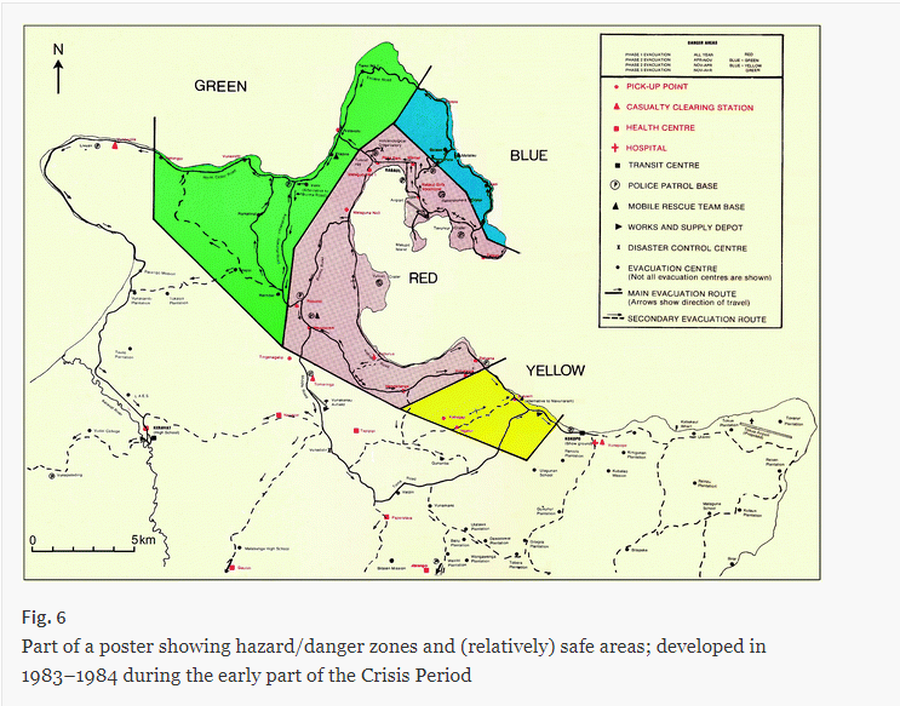Part of a poster showing hazard/danger zones and (relatively) safe areas; developed in 1983–1984 during the early part of the Crisis Period
Rabaul, Papua New Guinea, 1984
Figure 6 (in reprint) in: RVO. (1984). (Reprinted in: McKee C., Itikarai I., & Davies H. (2017). Instrumental Volcano Surveillance and Community Awareness in the Lead-Up to the 1994 Eruptions at Rabaul, Papua New Guinea. In: Fearnley C.J., Bird D.K., Haynes K., McGuire W.J., & Jolly G. (eds) Observing the Volcano World. Advances in Volcanology (An Official Book Series of the International Association of Volcanology and Chemistry of the Earth’s Interior – IAVCEI, Barcelona, Spain). Springer, Cham. https://doi.org/10.1007/11157_2017_4)
This map was produced by an official agency, but is NOT the most recent, most complete, or main operational map.
For the current operational hazard map, please consult the proper institutional authorities.

Click on image for full-size map. If link seems broken, try the archived version.
Map Data
Map ID 1594 Hazard Process(es) Unstated or all hazards Hazard Zone Presentation Hazard level-focused: All or most hazards are combined by hazard level on a main map panel Temporal Scale Crisis, or short-term, map (hours to decades) Spatial Scale Volcano and surrounding area Publication Format Map sheet or poster Zonation Method(s) Derived/simplified from another map Zonation Model(s) Scenario(s) Considered Alert levels Hazard Zone Label(s) Access (exclusion, danger, or safe zones) Probability Definition(s) Alert levels imply probability Purpose Crisis management and response: Intended to be used for managing, responding to, and taking action during an eruption; often includes evacuation routes, access restrictions, actions to take, etc. Audience General public and/or media Language(s) English Basemap(s) Street map Basemap overlay(s) Diemsionality Planimetric (2D or map) view Color Scheme Red to Blue
